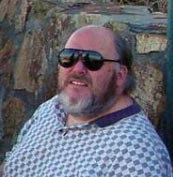A Job Hunter’s Quick Primer on HDTV

[March 2024] The newest technologies, the economy, and consolidation have played major parts in the reduction in the number of engineering jobs around the country. That is not to say there are no jobs at all. Often, in smaller markets, engineers find less than full-time work, sometimes having to contract with a number of stations and travel a lot to survive. Dana Puopolo has worked on both the radio and TV sides of the industry.
There are lots of good-paying TV engineering jobs out there.
Working conditions are also far better than those of the radio. However, you need to understand how TV works to get into TV engineering. Fortunately, it is not hard.
DIGITAL TV
Digital television is simply an Asynchronous Serial Interface (ASI) data stream.
That is just a lower bandwidth version of what satellite transponders use. ASI is a data protocol created by Intel in the late 1980s. Your TV tunes into the stream
- 4 Mbps for ATSC-1 or
- 7 Mbps to 54 Mbps (using VBR – variable bitrate) per TV station for ATSC-3
and decodes the desired signal based on its PID or Program ID.
ASI is the standard for HD transmitter inputs (either via Cat 6 or coax). As mentioned above, ASI also feeds satellite uplinks. It is pretty much the standard protocol for outside a TV plant.
Serial Digital Interface (SDI) is the common video and audio standard used within a TV facility.
It runs on a 7575-ohm coax cable or fiber and supports pictures up to 4K (2180P) and audio up to 7.1. With coax cable, it is limited in length to 100 meters, but SDI repeaters and DAs are common d inexpensive.
CHANNEL SHARING
Channel sharing (Multiple TV station streams on one transmitter) is common in TV.
As an example, when our station was ATSC-1 (Pre ATSC-3 Lighthouse) our RF Channel 27 transmitter was the source for WWJE 50.1 and WUNI 66.1 – 66.5. Now our ATSC-1 stuff is on our partners’ ATSC-1 transmitters spread all over the market.
How this works is that TV systems include Program and System Information Protocol (PSIP), which is encoded within their carriers. This allows TV sets to use virtualizing to “put” channels where the are supposed to go. When you re-scan your over the air TV set, what you are doing is resetting its PSIP to display the latest channel information on your TV.
Except for the need to rescan your TV from time to time, PSIP happens transparently from the viewer’s standpoint.
THE ENCODER
The single most important part of a TV station (next to its transmitter of course) is its encoder.
The encoder takes the various SDI (And/or Multicast IP) video and audio inputs, sets their various bandwidths, inserts feed-forward error correction and combines them into a single ASI output stream which then goes into the transmitter. 99% of the encoders are made by Harmonic.
The good thing is that setting up the encoder is usually outside the purview of the local engineers (Most TV groups either have specialists on staff or hire consultants to remote in).
TV TRANSMITTERS
Most – but not all – TV transmitters today are solid state and water cooled.
Comark, Gates Air, and Rohde and Swarz are the “Big 3” TV transmitter suppliers in the USA. Most companies will send their new engineers to transmitter school at the manufacturer.
By the way, water cooling is no big deal. You just need to spray out the heat exchangers every couple weeks during the spring and summer so pollen and dust do not affect their cooling. Pumps do fail, but most transmitters have built-in backup pumps.
THE RACK ROOM
TV equipment generally comes in dual rack size cards which plug into 19″ frames and use a common protocol (power supply pinout, etc.).


Back planes come with the cards which attach to the back of the frames for input and output. Most card frames have redundant power supplies.
IP transmission is becoming common in digital TV, likely replacing satellites and RF STLs in the future. This is mostly handled by outside companies such as LTN Global and Amagi.
FAIRLY FAMILIAR
The rest of it (antennas, transmission lines, HVAC, Generators, building maintenance, remote controls, etc.) are the same as radio.
The good news is that most TV groups are willing to train you and they are currently hiring engineers from both radio and cable TV.
Reading up on this and knowing the terminology will likely get you to at least a second interview. Once there, simply convince the hiring manager(s) that you are worth hiring and training.
Trust me, I did it that way myself!
– – –
Over the years, Dana Puopolo, now the Director of Technology at Televisa-Univision in Boston, has been in markets large and small. His emphasis on audio purity is well-known. You can reach Dana at dpuopolo@usa.net
– – –
Would you like to know when more articles like this are published? It will take only 30 seconds to
click here and add your name to our secure one-time-a-week Newsletter list.
Your address is never given out to anyone.
– – –
